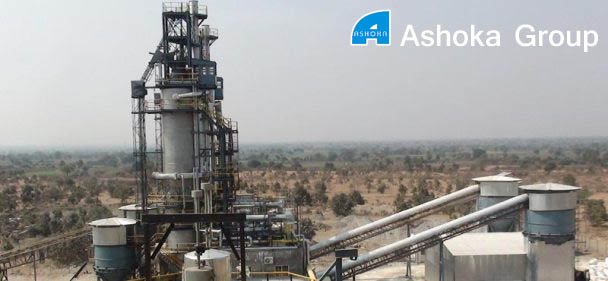Industrial Gears Manufacturers, Suppliers and Exporters
Ashoka Gears is India's top Industrial Gearing Solutions Company. Since 1952 we are Manufacturer and exporter of Industrial Gears. We design and manufacture Gears, Gearboxes, Geared Motors and Gear Assemblies, using our contemporary integrated manufacturing facilities. Spanning over Five decades of manufacturing excellence. We offer a comprehensive range of products and services—cutting edge gear solutions for a wide range of applications and specialized gear reconditioning services. Our presence in the customized products domain is a strong one, with us occupying a dominant position in the market today.
Type of Industrial Gears:
Gearth Gears Manufacturer: Girth Gears made in multiple segments, which can be 2, 4 or 8 equal sizes, in other area girth gear are also known as split ring gears. Girth gears mainly using in heavy industrial mills, steel re rolling mills, kiln drive system, paper industries.
We as a girth gears manufacturer, exporting and supplying quality girth gears with high efficiency and quality. The tool Girth gears is very popular and useful due to economical manufacturing cost and quick install in comparison of other gears. these gears are durable and life of girth gears depends upon lubrication and alignment. Different industries prefer and give first choice to girth gears due to its economical cost, quick and easy installation and low operational cost. Girth gear is mostly used in kiln drives and mills. The industries, where Girth gears are used are sugar mills industries, paper mills industries, steel and iron industries etc.
Spur Gears: It is a cylindrical gear with teeth parallel to the axis. An involute is a curve that is traced by a point on a taut cord unwinding from a circle, which is called a BASE CIRCLE. The involute is a form of spiral, the curvature of which becomes straighter as it is drawn from a base circle and eventually would become a straight line if drawn far enough.
Helical Gears: Helical gear can be used for transmitting motion between parallel shafts as well as between perpendicular (or any other angle) shafts. Helical gears used for transmission at any angle are usually called spiral gears.
Pinion Gears: Pinion gear is a comparatively small in size, pinion gear’s teeth fit into a bigger wheel gear. Its rotation action is converted into linear movement when the pinion gears turns and moves the rack. Pinion gears are very common and useful gears therefore pinion gears are popular in many engineering applications. We at Ashoka Engineering are manufacturers, exporters and suppliers of Pinion Gears.
Helical & Double Helical Gears: these gears are similar to industrial gears. Helical gears have slanting teeth to help gear meshing, these gears are circular in shape where teeth are curved along helical path. Helical gear teeth is connect better than spur gear teeth and run better.Application of Helical Gears:Helical gears can be configured either crossed or parallel, depending upon the application’s requirements. Mechanically speaking, parallel helical gears are better. This is because the helices meet at a tangent.
Precision Gears: These Gears known for their good long lasting performance and constant motion under heavy loads and this is the reason that these gears are used in various heavy machined industries. As a Precision Gears Suppliers we known for quality and performance like our other products.As more than 50 years of experiences we can say precision gears is a object which gives accurate motion in different type of loads and maintain smoothness and accurate performance results.
For any Industrial Gears, Heavy Sheet Metal Fabrication, OEM equipment and turnkey plant projects please write us on info@ashokaengineering.com or call us - 9811141400




